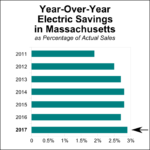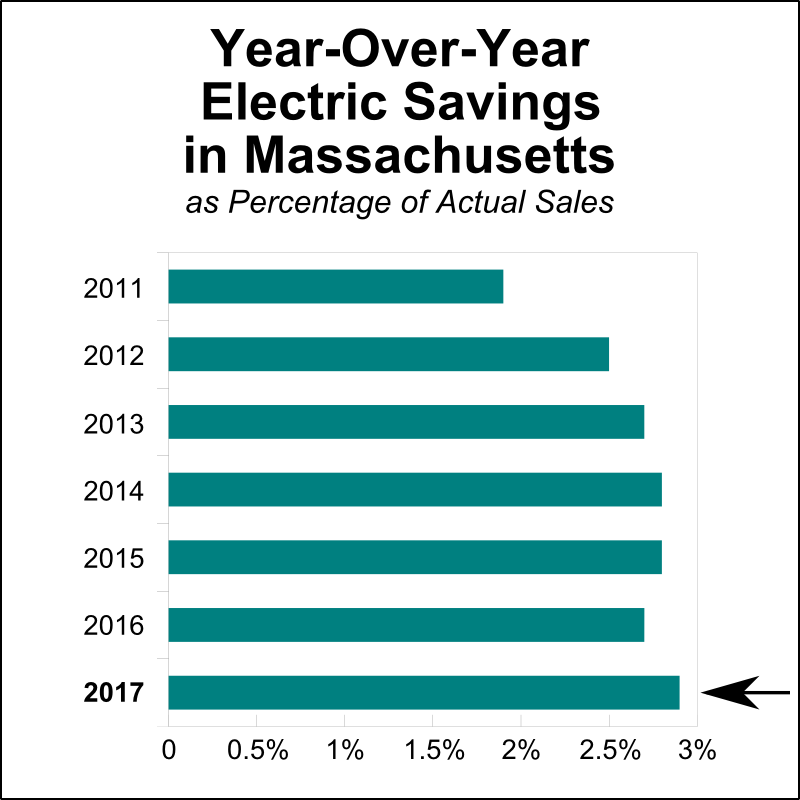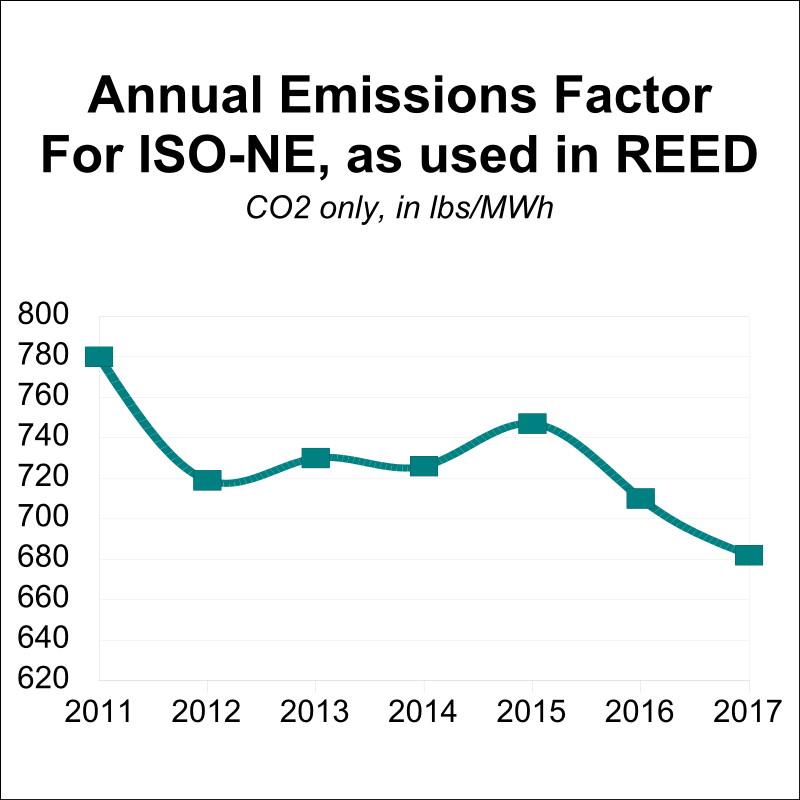
How We Doin’?: Pinpointing Progress a Few Percent at a Time
If you care about climate, then you care about carbon pollution. And if you care about carbon, then you care about energy consumption. We’re all trying hard to reduce energy consumption. But it is really difficult to discern the results: How much energy is being saved, across a region, over time?
The experts at NEEP (Northeast Energy Efficiency Partnerships) have been carefully assessing this question for 7 years, in their detailed database known as REED (Regional Energy Efficiency Database). A couple of weeks ago, they released their latest analysis, data from 2017. The news is good

In Massachusetts, electricity’s rate of savings has accelerated a bit to 2.89% annually in 2017. Energy conservation programs had been aiming for 2.93% average annual savings during 2016-2018.ii
Aspirations are to exceed 3% in 2018 and beyond; though activists want to see 4-5%. The cumulative savings over the past seven years
And those are incredibly affordable savings. In New England over those seven years the cost of achieving these savings has been ranging between two and six cents per kilowatt-hour; far below the eighteen cents per
What does this mean for carbon impact? Percent reduction in consumption does not directly equal percent reduction in carbon impact. Below is a picture of the carbon content of grid electricity in New England over that period. It also shows a somewhat declining

So, between the decrease in consumption, and the decrease in carbon content, we’ve made substantial progress in the electricity sector over those seven years. Although REED doesn’t explicitly make the calculation, I will: these two trends multiply to produce a drop of 28.6% in carbon pollution resulting from electricity in Massachusetts between 2011 and 2017. This is fantastic
Other sectors need a lot more work. For instance, REED reports natural gas reduction has been hovering only around 1% annually. But it is easy to say that it is crucial that other states start emulating the profitable success that Massachusetts has had in electricity.
Even so, there is no resting on laurels. The REED data reflects substantial efforts that must be achieved anew every year for progress to continue.
And of course, in transportation, and in heating, there needs to be substantial new electrification to reduce carbon. Can overall consumption continue downward amid such counter-trends?
Take a minute to congratulate yourself for your role in the positive news-of-the-moment: statewide reduction on a scale of 2.9% per year. And because good news travels slowly, if at all, don’t forget to share it with others.
Then let’s all keep working for our carbon-free future.
References:
i. Gross Annual Energy Savings Electric Meter Level, from Northeast Energy Efficiency Partnerships, Inc., Regional Energy Efficiency Database. Retrieved 5/17/19 from https://reed.neep.org/
ii. 2016-2018 Massachusetts Joint Statewide Three-Year Electric and Gas Energy Efficiency Plan, September 25, 2015. http://ma-eeac.org/wordpress/wp-content/uploads/Gas-and-Electric-PAs-Plan-2016-2018-9-25-2015-Final-WITH-Appendices.pdf
iii. REED RENDERING #13, op cit.
iv. From emission factors used in REED (

